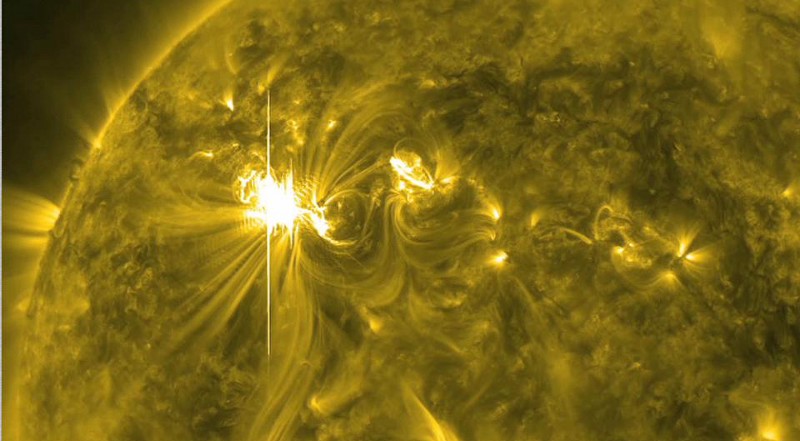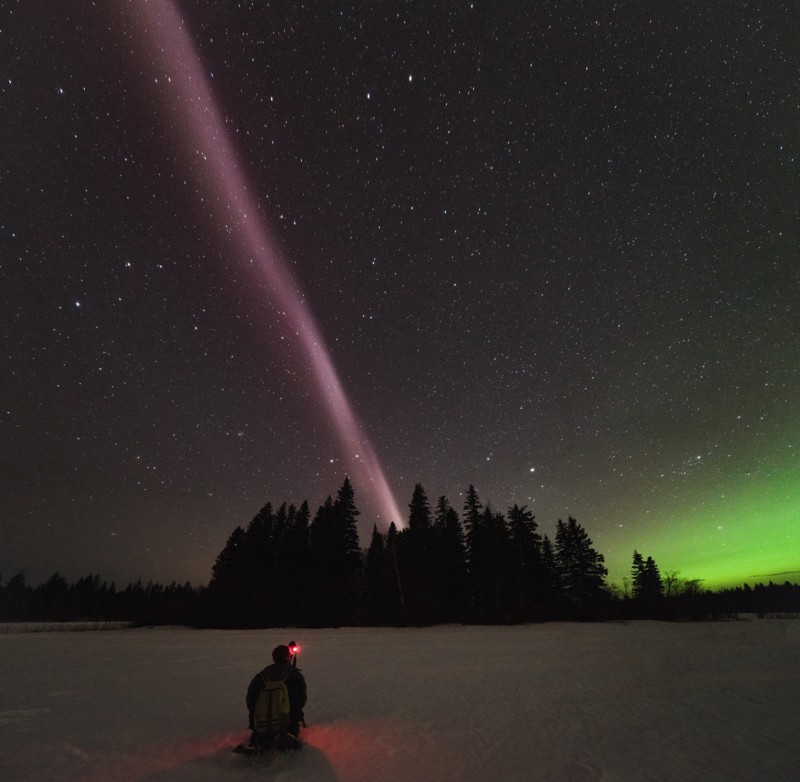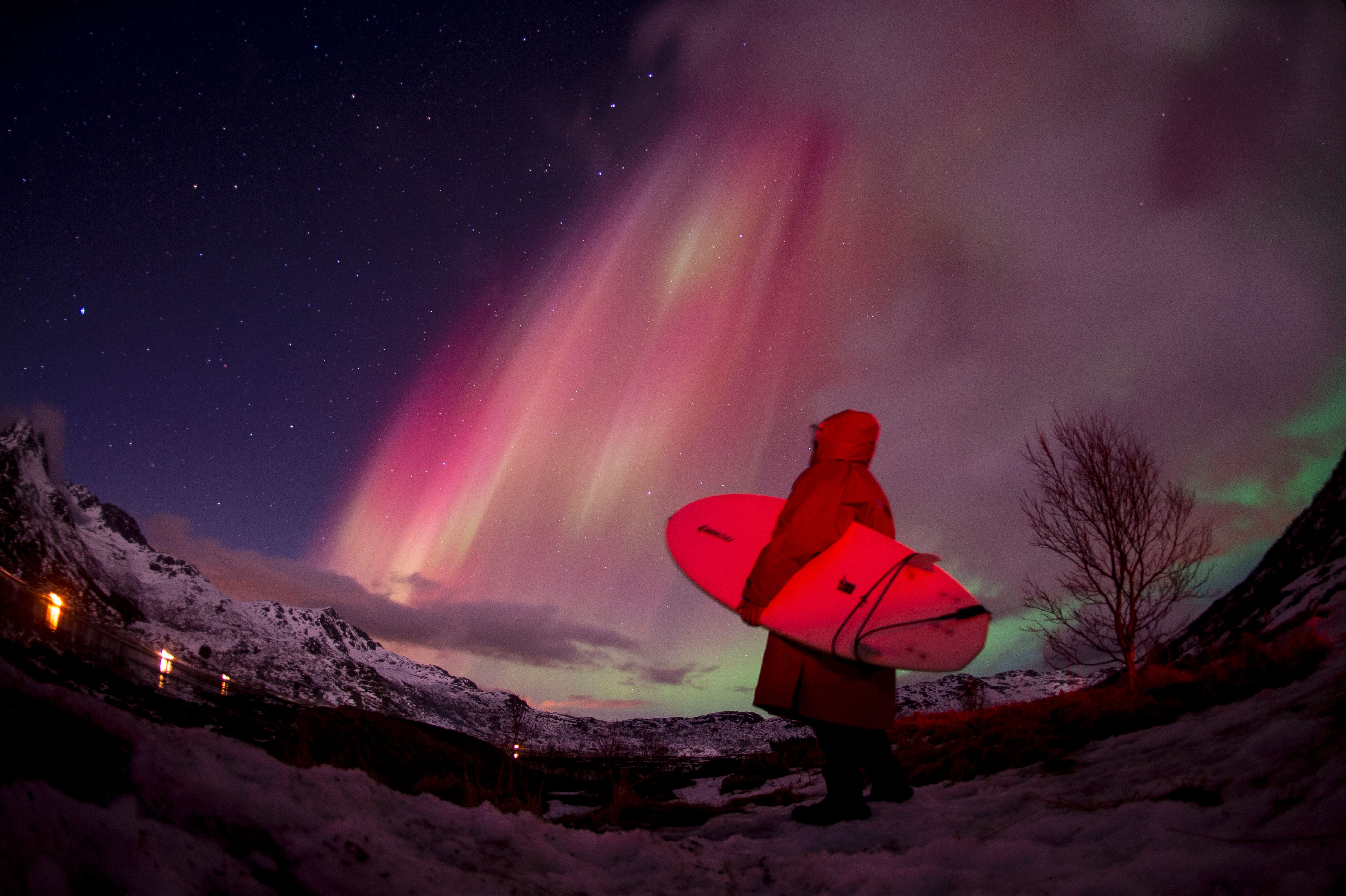Scientists stumped by ‘STEVE’, a mysterious ribbon of light in the sky

(salty72/Shutterstock)
Those of us who follow science news had a good chuckle when news broke a while back about a mysterious sky phenomenon appearing in auroral and sub-auroral regions dubbed ‘Steve’. Well, Steve is actually STEVE, standing for Strong Thermal Emission Velocity Enhancement, and it’s no joke. What it is, on the other hand, is unknown.
Appearing in the dark sky as a mostly vertical ribbon of vibrant whites and purples with shimmering offshoots of green, STEVE has been photographed and video-recorded for decades. The scientific community, prompted by the citizen scientists who’ve been capturing images of it, is just now catching up.
(NASA/Goddard)
The initial assumption was that STEVE was some flavor of aurora borealis, but a new study published in Geophysical Research Letters—the first serious examination of STEVE—finds that it’s not. Bea Gallardo-Lacourt, lead scientist of the new study, says, “Our main conclusion is that STEVE is not an aurora. So right now, we know very little about it. And that’s the cool thing, because this has been known by photographers for decades. But for the scientists, it’s completely unknown.” She and her colleagues refer to the phenomenon as a ‘sky glow’.

May 17, 2016. (Photo: Rocky Raybell)
Why it’s not an aurora
Auroras are caused by energetic particle precipitation, which is, as the name implies, a raining-down of high-energy electrons, protons, neutrons, and ions shot toward the earth from the sun. Earth’s magnetic field draws these particles towards our north and south poles.
When these highly charged particles hit Earth’s atmosphere, they collide with atoms and molecules of oxygen, nitrogen, and other elements to produce both the aurora borealis (North Pole) and aurora australis (South Pole). When particles interact with oxygen, yellow and blue light is produced. Nitrogen encounters result in red, violet, and sometimes blue lights, depending on the type of collision that occurs. According to NASA, atomic nitrogen causes blue lights while molecular nitrogen tips beams to purple.
The standout finding of the new research is that STEVE displays don’t involve particle precipitation, meaning, as the study says, that “its skyglow could be generated by a new and fundamentally different mechanism in the ionosphere.”
How we know STEVE is different
The study is based on the data for a single STEVE event on March 28, 2008 as tracked at the time by Canadian ground-based Themis All-Sky Imagers (ASIs) in Kapuskasing, Ontario and Sanikiluaq in Nunavut, as well as energetic particle detectors on an NOAA Polar Orbiting Environmental Satellite, POES‐17, that crossed over STEVE.

(Credit: Big Think/Google Maps)
It was the POES-17 that provided the critical information: “In the POES‐17 data, we did not observe protons and high‐energy electron precipitation. For low‐energy electrons (50 eV to 1 keV), we observed an increase in the flux. However, the integrated electron energy flux at that time was too low to be responsible for any optical structure and therefore not associated with STEVE. We assert that this observed STEVE event is not directly produced by particle precipitation at 800 km altitude.” [800 km is the height of POES-17.]
So what could be causing STEVEs?
The authors of the study cite three possibilities. First, they say they can’t rule out that protons of lesser energy than they measured could have something to do with the ribbons of light. It could also be that STEVE is produced by some ionospheric process higher up, “similar to weak stable auroral red (SAR) arcs in the sub-auroral region.” The third possibility? Some process that’s completely unknown to science right now.






